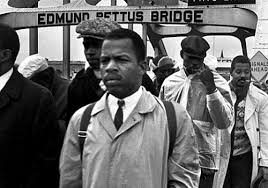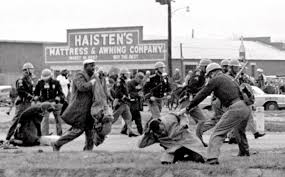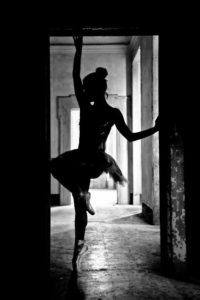I didn’t know it was a “thing”, white woman tears. As with many matters of racial inequality, the matter of ‘white woman tears’ fell into a larger area, of which I have remained unaware. A blogger I follow wrote the following in 2018 and reposted it this week in light of the current political climate. About The Weary Weaponizing of White Woman Tears. I definitely heard it when I read it 2 years ago, however, it struck home this week more than it did then. In 2019 I was able to visit The National Memorial for Peace and Justice casually known as “The Lynching Memorial.” I expected to be confronted by photos of lynchings, a very “in your face” kind of representation. It was anything but. It was the most solemn place I have visited in my life. There are 4 sides to the memorial. 6-foot rusted, metal markers start on the first side sitting on the floor. On the second side the floor slopes downwards, the markers remain level with the first side, rising in the air from your viewpoint. Eventually you have to look straight above you to read the names on them. I never expected so many names. Each marker represents one county in the South and bears all the names of the lynched for that county. Turning the corner to the third side, not only do the markers continue to elevate from your point of view, but the walls on both sides are lined with small plaques which summarize the circumstances for individual lynchings. A heartbreaking number of them involve this phenomenon of white woman tears. This man knocked on the door of a white woman. This man looked at a white woman. We are all at least somewhat familiar with the case of Emmett Till, a 14 year old boy who was brutally lynched for allegedly flirting with a 21-year old, married white woman. The case became well known when his mother insisted on holding an open casket funeral for her son. Decades later Carolyn Bryant, the woman in question, admitted to fabricating parts of her story, specifically that this 14 year old boy never grabbed her wrist and uttered obsenities which was, in large part, the case against him.
Make no mistake about it. White woman tears are both a powerful and deadly subtance when it comes to matters of race and white privilage. Recent cases come to mind, the “BBQ Becky’s” and “Permit Patty’s”. Most recently the case of a woman in NYC Central Park who called the police and said a black man was threatening her for asking her to leash her dog. Fortunately the black man in question filmed the interraction. Who knows his fate if he hadn’t had this proof. White woman tears vs. black man. How many heartbreaking times has this scenario played out?
Conversations about race are uncomfortable and complicated. The events of this past week in America have been impossible to ignore. Protests, riots and violence which stemmed from the death of George Floyd, an unarmed black man, at the hands of a white police officer. Every part of this story has played out before, numerous times, in America. We have heard this narrative over and over. What made this time different? Was it the fact that Americans, on the whole, found themselves at an already fevered political pitch over Covid-19? Was it the fact that it finally happened too many times in recent history? Was it that Americans are progressing socially? For whatever reason, this was different.
Up until a few years ago, I would have considered myself pretty well-read in the Civil Rights Movement and American History. Up until a few years ago, I considered myself a sensitive soul that saw and tried to correct injustice. Up until a few years ago, I considered myself more aware of this than the average person. The truth is – injustice causing ‘your heart to hurt’ changes nothing, at all. It’s slacktivism. It’s keyboard warrior-ism.
Years ago I adopted a hardline rule with myself – I will not be friends with any person who is openly racist. I felt this proved a point. I realize now, though, all it accomplished was removing me from a responsibility to call racist people on their bullshit. You can’t call it out if you remove yourself from it. You can also live in a la-la land where it doesn’t really exist. Telling ourselves we are ‘doing our part’ because we are not racist and we raised our children likewise is engaging at the absolute lowest level of activism possible. The absence of negative action is better than nothing but it is not ‘doing our part’. Not now, not ever. Two generations ago, white people who had a change of heart were ‘doing their part’. That was 50 years ago. We need to do better.
Each year on MLK day we pay tribute to a man who was able to effect change in America. We have been missing the mark here. During this past week I have seen a flurry of MLK memes in regards to the social crisis at hand. These memes are in the vein of – protest more quietly please. Protest in a less disruptive way, please. I mean – look at this guy. He brought about change in a way that was acceptable to white people. Be more like him.
MLK method did work. It worked because it turned the spotlight on the violence perpetrated against black people. The images of suit and dress wearing, peaceful activists contrasted with the firehoses, violent beatings and vicious dogs at the hands of white law enforcement managed to catch the attention of the rest of the country. Change in MLK time did not take place because his message of peace was adopted by the systematic white racists of the time. It came because pressure from other white people on these systematic racists forced them to change. Black protestors assumed the worst kinds dangers and even death in facing off with both law enforcement and huge gatherings of white counter-protestors. These people showed indescribable bravery. There was no – I see your point – here by those actively oppressing black Americans. These non-violent protests were met with brutal violence. Everything possible was done to extinguish this movement. It would not have been anywhere near as successful had it not caught the attention of millions of Americans living elsewhere. MLK was beaten, incarcerated and recieved a bullet to the chest for his efforts to protest in a way that white people found acceptable. Black America has never stopped protesting injustice. Injustice has never stopped being practiced in America either. White people have continued along in complacency unless forced to change due to social pressure and changing the law. Most of us have abjectly failed to help black America. No sizeable Civil Rights victories for African Americans have come about for most of our lifetimes.
MLK has been sanitized in white history as a quiet man of peace. He was not quiet. The means he chose for change was non-violence and this method was successful.

Methods of non-violence only went one way in these protests. Protestors were non-violent – their oppressors, however, returned this means of protest with violence, lynching’s, wrongful imprisonment and harsher laws.

Non-violence allowed the Civil Rights Movement to not be as easily discredited. In recent years, we have seen numerous peaceful and non-peaceful protests alike being quickly discredited. The peaceful protest of Colin Kaepernick was smeared as insulting to all members past and present of the US Military. It was discredited as he was a man of privilege. I lived 13 miles from the Fergerson Protests and Riots in 2014. It was a local case to us. This protest was discredited due to the looting and destruction that took place during it. When we discredit protest so quickly we are completely removed from having to ask ourselves if there are real issues that need to be addressed. MLK is lauded as a just, peaceful man. The reality is that, at the time, he was one of the most hated men in America. 40 Civil Rights leaders were assassinated between the years of 1955-1968 (source) To paint MLK in the sanitized, white person narrative barely gives him credit for what he was able to accomplish. Portraying him as a messenger of peace completely overlooks his willingness to break laws and make people uncomfortable by challenging their status quo. As pressure formed on the oppressors, violence and hatred grew around MLK. The truth is – he was a social extremist whose message has been painted over with a huge ‘schmear’ of kumbaya.
We see meme after meme posted on MLK day praising his message of peaceful change. We tell ourselves we follow his footsteps by forgiving others and removing hate from our lives. We do not follow in the footsteps of MLK unless we are actively pressing for racial equality in America. We rarely see MLK quotes taking white American moderates to task, even though that was his entire point.
I must make two honest confessions to you, my Christian and Jewish brothers. First, I must confess that over the past few years I have been gravely disappointed with the white moderate. I have almost reached the regrettable conclusion that the Negro’s great stumbling block in his stride toward freedom is not the White Citizen’s Counciler or the Ku Klux Klanner, but the white moderate, who is more devoted to “order” than to justice; who prefers a negative peace which is the absence of tension to a positive peace which is the presence of justice; who constantly says: “I agree with you in the goal you seek, but I cannot agree with your methods of direct action”; who paternalistically believes he can set the timetable for another man’s freedom; who lives by a mythical concept of time and who constantly advises the Negro to wait for a “more convenient season.” Shallow understanding from people of good will is more frustrating than absolute misunderstanding from people of ill will. Lukewarm acceptance is much more bewildering than outright rejection.
–
Martin Luther King Jr. “Letter from a Birmingham Jail”, 1963 (emphasis mine)
In our current times, African Americans are incarcerated at 10x the rate of their white counterparts. (source) There is significant racial bias in convictions. For instance, a person of color is nearly 4x as likely to be imprisoned on a marijuana charge than white counterparts and receive tougher convictions. (source) We see the oppression and discrimination around us and yet fail to accept that we, “non-racists”, are perpetuating it.
This is the side we fail to acknowledge. White privilege. A power we assume at birth. A power we have, both knowingly and unknowingly, benefited from our entire life. Even as a young child, I would not have chosen benefits that were not extended to others. I would have, rightly, seen that as unfair, unwanted and unneeded. The vast majority of white people I know in life would also not accept white privilege, if these things were not extended to others. This is not a choice, as white people, we have to make. We are born into it. There is no possible way to surrender it in this country. We can, however, educate ourselves on what it is and how it been extended to us. We can challenge the fact that we are extended these benefits while others are not. Not only can we do this, we must start doing this if we care about injustice at all.
The following are examples of white privilege:
1. I can if I wish arrange to be in the company of people of my race most of the time.
2. I can avoid spending time with people whom I was trained to mistrust and who have learned to mistrust my kind or me.
3. If I should need to move, I can be pretty sure of renting or purchasing housing in an area which I can afford and in which I would want to live.
4. I can be pretty sure that my neighbors in such a location will be neutral or pleasant to me.
5. I can go shopping alone most of the time, pretty well assured that I will not be followed or harassed.
6. I can turn on the television or open to the front page of the paper and see people of my race widely represented.
7. When I am told about our national heritage or about “civilization,” I am shown that people of my color made it what it is.
8. I can be sure that my children will be given curricular materials that testify to the existence of their race.
9. If I want to, I can be pretty sure of finding a publisher for this piece on white privilege.
10. I can be pretty sure of having my voice heard in a group in which I am the only member of my race.
11. I can be casual about whether or not to listen to another person’s voice in a group in which s/he is the only member of his/her race.
12. I can go into a music shop and count on finding the music of my race represented, into a supermarket and find the staple foods which fit with my cultural traditions, into a hairdresser’s shop and find someone who can cut my hair.
13. Whether I use checks, credit cards or cash, I can count on my skin color not to work against the appearance of financial reliability.
14. I can arrange to protect my children most of the time from people who might not like them.
15. I do not have to educate my children to be aware of systemic racism for their own daily physical protection.
16. I can be pretty sure that my children’s teachers and employers will tolerate them if they fit school and workplace norms; my chief worries about them do not concern others’ attitudes toward their race.
17. I can talk with my mouth full and not have people put this down to my color.
18. I can swear, or dress in second hand clothes, or not answer letters, without having people attribute these choices to the bad morals, the poverty or the illiteracy of my race.
19. I can speak in public to a powerful male group without putting my race on trial.
20. I can do well in a challenging situation without being called a credit to my race.
21. I am never asked to speak for all the people of my racial group.
22. I can remain oblivious of the language and customs of persons of color who constitute the world’s majority without feeling in my culture any penalty for such oblivion.
23. I can criticize our government and talk about how much I fear its policies and behavior without being seen as a cultural outsider.
24. I can be pretty sure that if I ask to talk to the “person in charge”, I will be facing a person of my race.
25. If a traffic cop pulls me over or if the IRS audits my tax return, I can be sure I haven’t been singled out because of my race.
26. I can easily buy posters, post-cards, picture books, greeting cards, dolls, toys and children’s magazines featuring people of my race.
27. I can go home from most meetings of organizations I belong to feeling somewhat tied in, rather than isolated, out-of-place, outnumbered, unheard, held at a distance or feared.
28. I can be pretty sure that an argument with a colleague of another race is more likely to jeopardize her/his chances for advancement than to jeopardize mine.
29. I can be pretty sure that if I argue for the promotion of a person of another race, or a program centering on race, this is not likely to cost me heavily within my present setting, even if my colleagues disagree with me.
30. If I declare there is a racial issue at hand, or there isn’t a racial issue at hand, my race will lend me more credibility for either position than a person of color will have.
“White Privilege and Male Privilege: A Personal Account of Coming To See Correspondences through Work in Women’s Studies” (1988) (Exerpt)
We, as white people, are unable to lay our white privilege down. I think a lot of us would, voluntarily, but this option is not available to us. We are able, however, to use this white privilege for good. It involves us actively pushing outside our comfort zones. It is time to level up, white America. We need to be the ones speaking up when we see inequality because our voices are heard by those doing the oppressing. We need to be the ones confronting other white people’s racist bullshit. It is not the job of the oppressed to eliminate their oppression. It is our job, as members of the group doing the oppressing, to eliminate it. We need to stop vilifying the means of protest (Kaepernick as an example) and be the ones to be taking a knee instead. We are the ones who have idily stood by because we had nothing to lose. We are the ones who have assumed that every American encounters the country in the same way we do. Nothing will change as long as the current system is in place.
We need to start using our white woman tears for good.


